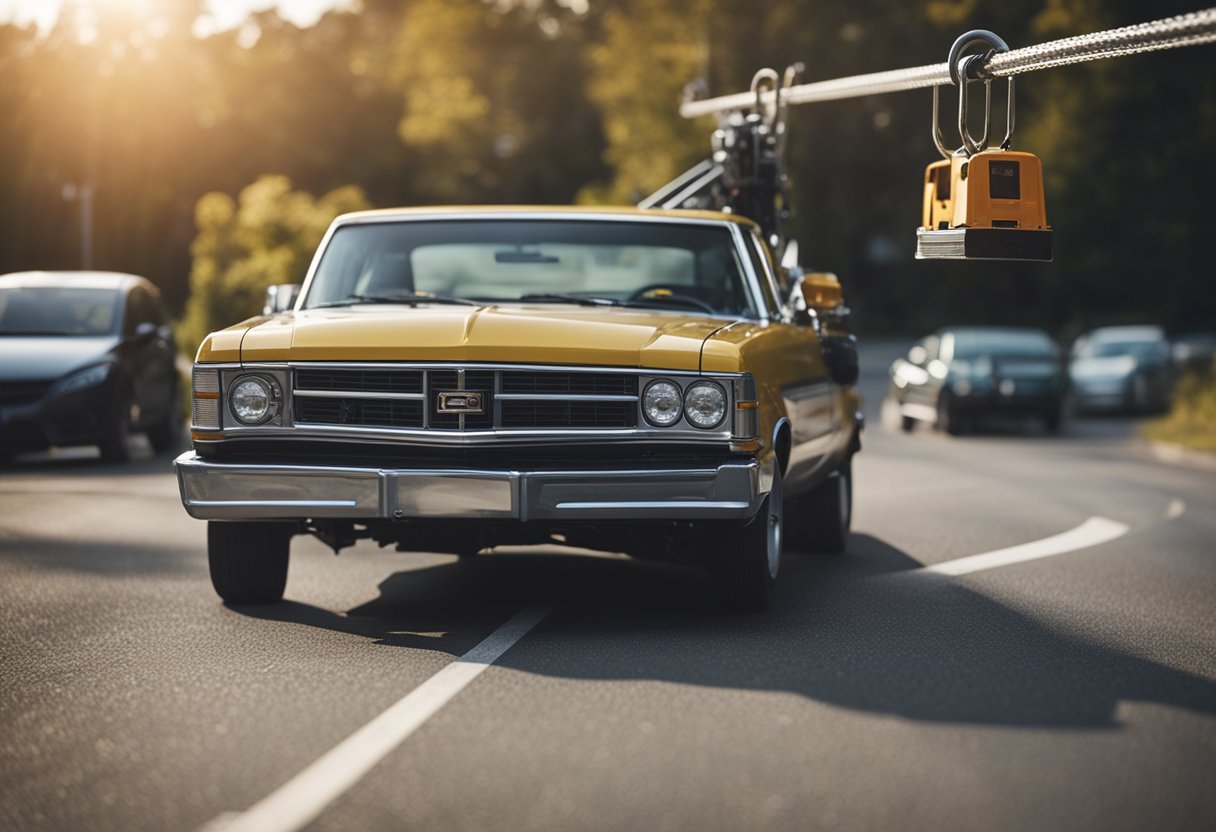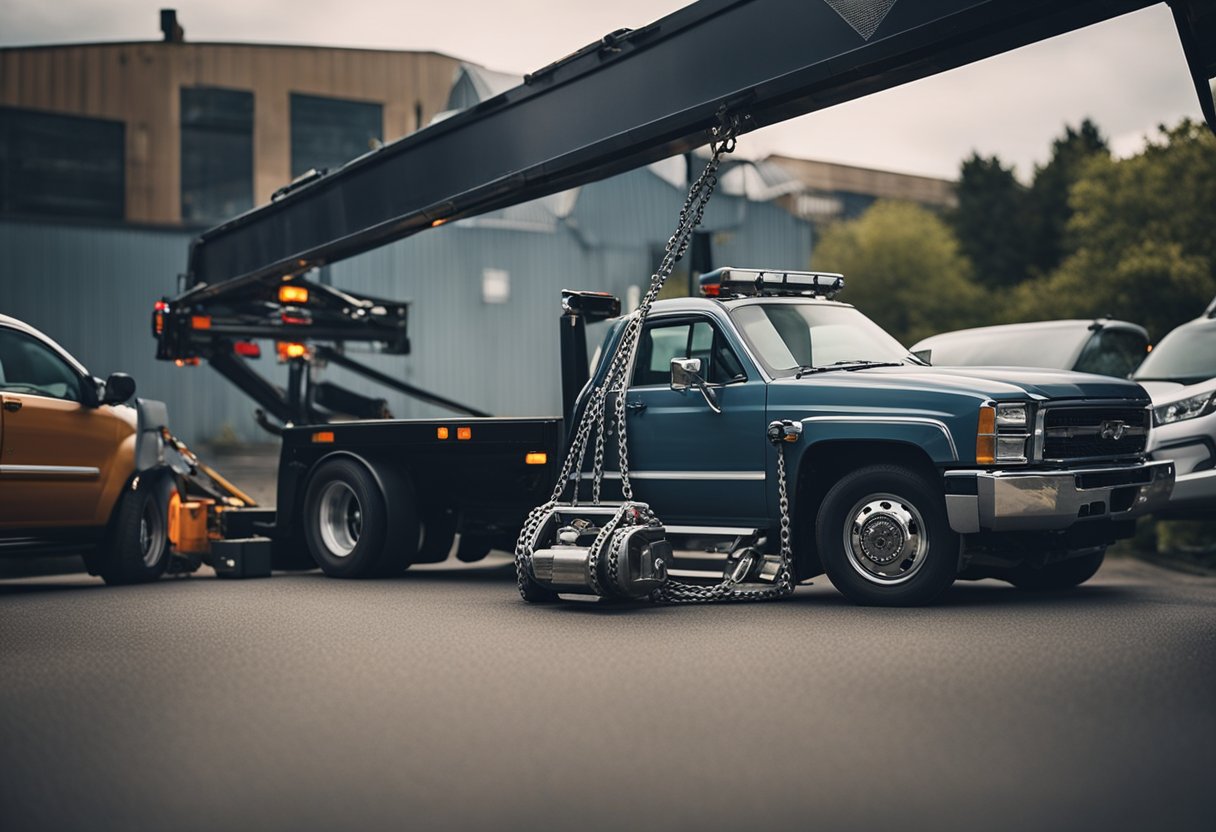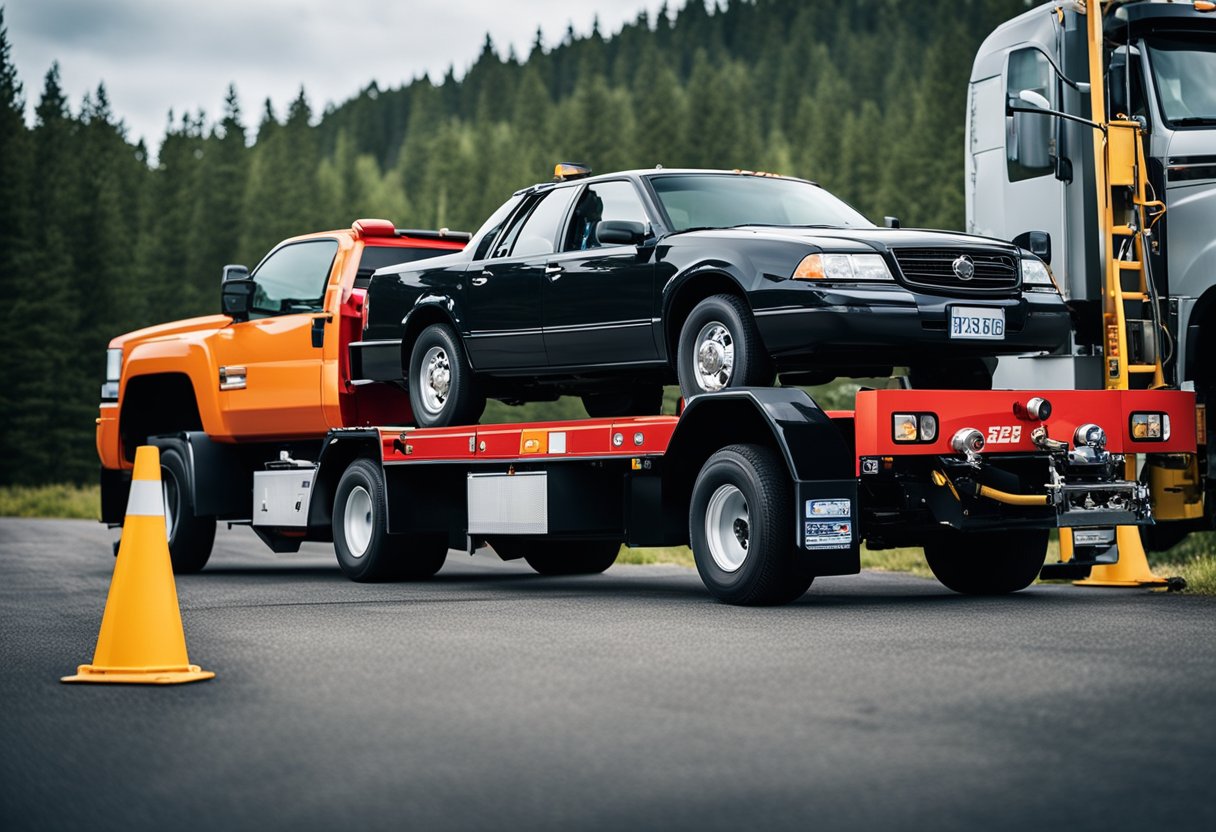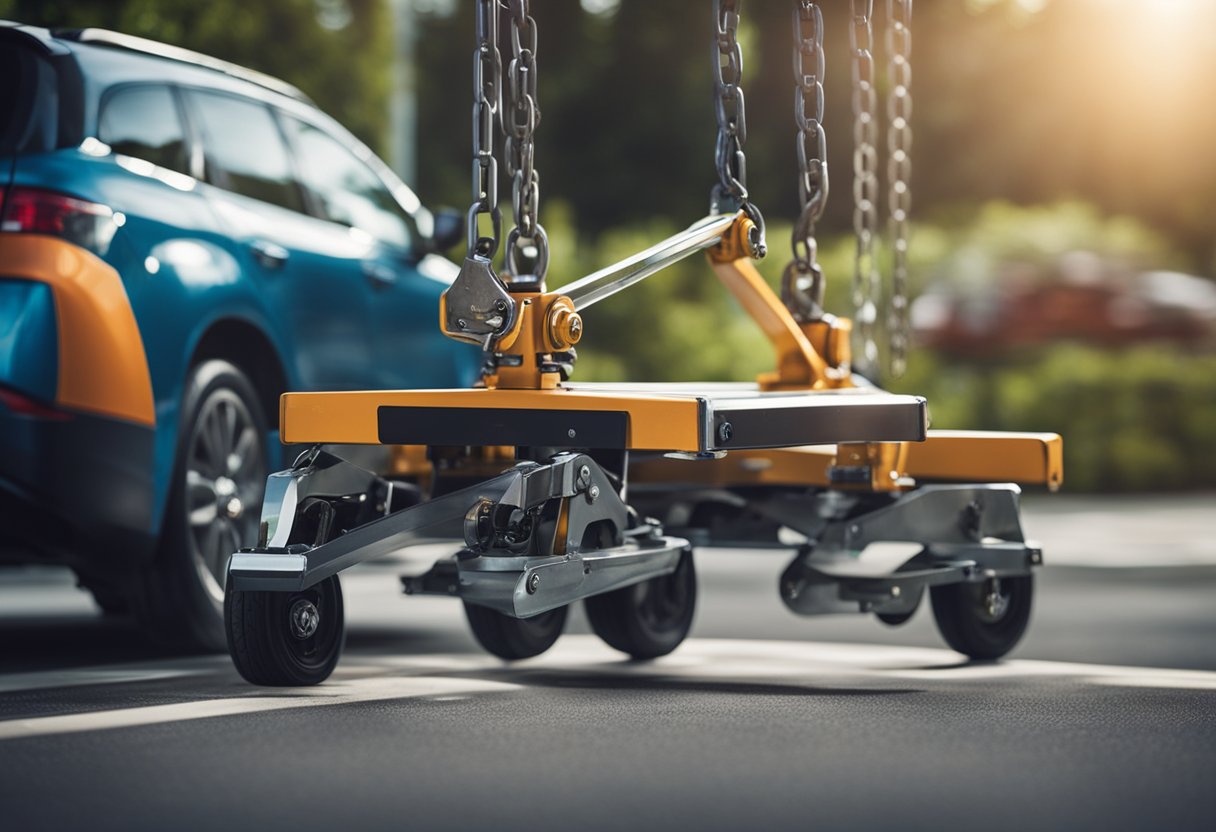Tow trucks are an essential part of roadside assistance, providing a means for moving vehicles that are inoperable, illegally parked, or involved in accidents. Understanding how these powerful machines operate can be intriguing. The basic function of a tow truck is to transport vehicles from one location to another in a safe and efficient manner. There are various types of tow trucks, each with its own mechanism for securing and transporting vehicles. The most common types include boom trucks, wheel-lift, flatbed, and integrated tow trucks, each designed for specific scenarios and vehicle sizes.

The mechanics of a tow truck involve several components working in unison. For instance, a boom truck uses an adjustable boom winch to recover vehicles from a ditch or over an embankment. Conversely, flatbed tow trucks employ a hydraulic tilt tray to create a ramp, allowing a vehicle to be driven or winched onto the bed for transport. Operating a tow truck requires skill and an understanding of the machinery to ensure the safety of both the operator and the vehicle being towed.
Contents
Key Takeaways
- Tow trucks transport inoperable or stranded vehicles to desired locations.
- Each type of tow truck has a unique mechanism tailored for specific towing situations.
- Operating tow trucks requires specialized knowledge for safe and effective vehicle recovery.
Types of Tow Trucks
https://www.youtube.com/watch?v=BpYSyBI0_kA&embed=true
Tow trucks come in various forms, each designed to perform specific tasks under different circumstances. The capacity, design, and functionality of tow trucks change with each category, making them suited to different types of vehicle recovery and transportation jobs.
Light-Duty Tow Trucks
Light-duty tow trucks are versatile and commonly used for everyday towing tasks, such as assisting vehicles that have encountered breakdowns or minor accidents. The wheel-lift tow truck is a typical example of this category, using a hydraulic yoke to lift the vehicle by the wheels. In many situations, I prefer the flatbed tow truck, also known as a rollback tow truck, for its platform that can be hydraulically inclined and lowered to the ground, enabling vehicles to be driven or pulled onto it. This design minimizes the risk of damage to the towed vehicle.
Medium-Duty Tow Trucks
When I encounter more substantial towing needs, like towing delivery trucks or vans, medium-duty tow trucks are my go-to. They bridge the gap between light-duty and heavy-duty tow trucks, offering increased towing capabilities without the extensive power of the heaviest tow trucks. Medium-duty trucks are frequently equipped with wheel-lift systems and sometimes feature a flatbed for more versatility. The towing process with these trucks usually requires more power and often calls for operator expertise in maneuvering larger vehicles.
Heavy-Duty Tow Trucks
For the heaviest towing operations, such as those involving buses, large trucks, or heavy machinery, heavy-duty tow trucks are essential. These trucks are equipped with potent engines and a complex framework of recovery mechanisms. I find the integrated tow truck—which combines elements of a traditional hook and chain tow truck with a heavy-duty wheel-lift—particularly effective for large-scale jobs requiring maximum power and stability. The hook and chain are rarely used nowadays because of the potential damage they can cause, but integrated trucks offer a more secure and powerful towing solution for large vehicles.
Mechanics of a Tow Truck
https://www.youtube.com/watch?v=LtXKcYI4YdE&embed=true
Understanding the mechanics of a tow truck is crucial for recognizing its functionality in vehicle recovery and transportation. The essential components such as the hydraulic system, winches and booms, and the wheel-lift with brackets, all work in harmony to perform the heavy-duty task of towing.
Hydraulic System
The hydraulic system is the heart of a tow truck, powering both the lifting and pulling mechanisms. I rely on this system’s ability to convert mechanical power into hydraulic energy, which in turn operates the other components like the boom and wheel-lift. Through controlled hydraulic fluid pressure, I can handle heavy loads with precision.
Winches and Booms
Winches, which are mounted on booms, provide the muscle for pulling vehicles onto the tow truck. I activate these winches to wind or unwind a cable that hooks to the vehicle needing to be towed. The boom, on the other hand, might either be fixed or pivotal. Using the boom lever in my cab, I can adjust the boom’s angle and reach to securely maneuver vehicles out of ditches or other difficult scenarios.
Wheel-Lift and Brackets
The wheel-lift, enhanced by a bracket system, is a modern towing marvel I often use. It employs a metal yoke that fits under the towed vehicle’s wheels and lifts them off the ground while the hydraulics do the work. This setup minimizes contact with the vehicle, thus preventing damage during transit. By manipulating the wheel-lift hydraulics, I ensure a firm and secure grasp on the vehicle for transportation.
Safety Measures During Towing

When I operate a tow truck, ensuring the safety of both the vehicles involved and any individuals near the scene is my top priority. Properly securing the vehicle and adhering to strict roadside assistance protocols are fundamental to performing a successful towing operation.
Vehicle Securing Methods
The first critical step in the towing process is securely attaching the vehicle to the tow truck. I use a combination of straps and chains to ensure the vehicle does not shift during transportation. For every vehicle, I follow these specific methods:
- Wheel Lift: Utilizing a metal yoke under the front or rear tires, I lift the vehicle partially off the ground. This method allows for wheels to remain stationary and secure.
- Flatbed: Here, the entire vehicle is positioned onto the tow truck’s platform. I use heavy-duty straps over each tire, anchoring the vehicle directly to the bed to prevent any movement.
Roadside Assistance Protocols
In providing roadside assistance, I adhere to a set of established protocols to maintain safety. This includes:
- Safety Signals: Before beginning the towing process, I ensure that all necessary safety signals are in place. This includes the use of hazard lights and traffic cones around the work area.
- Control Inspection: I conduct a systematic check of all the tow truck’s controls to confirm they are functioning properly, thereby preventing any unexpected vehicle releases during transit.
By meticulously following these methods and protocols, I ensure that every tow is conducted safely and efficiently, with the well-being of all as the highest concern.
Operating a Tow Truck
https://www.youtube.com/watch?v=Z12AAroH2xE&embed=true
Tow trucks are complex pieces of machinery, and operating one requires a clear understanding of its control station, the function of various levers and buttons, and the techniques for maneuvering and positioning. As a driver, I ensure safety and efficiency by mastering these controls.
Control Station Usage
In the driver’s seat of my tow truck, the control station is my command center. Here, I have an array of controls that allow me to operate the boom, winch, and tow mechanism. It’s vital that I am familiar with every gauge, switch, and display. The controls need to become second nature to me, especially when working in high-pressure situations or on a busy freeway.
Lever and Button Functions
Levers: The main levers control the movement and extension of the boom, as well as the angle of the tow sling or wheel lift. For each operation, I carefully engage the correct lever. Each lever is labeled with its specific function to avoid any confusion during an operation.
- Boom Lever: Controls the boom’s vertical and horizontal positioning.
- Winch Lever: Manages the winching cable’s tension and retraction.
Buttons:
The buttons typically operate the smaller functions of the tow truck, such as the flashing lights or the brakes for the winching cable. An emergency stop button is also present, which I am always prepared to use if the situation demands an immediate halt to all operations.
Maneuvering and Positioning
When it comes to maneuvering and positioning the tow truck, precision and foresight are paramount. Each movement must be calculated to ensure the towed vehicle is not damaged and other road users are not endangered. This is particularly challenging when operating on freeways, where the speed and volume of surrounding traffic complicate the towing process. I use side mirrors and, if available, rear-facing cameras to maintain awareness of my environment during the towing maneuver.
Design and Specifications

In my analysis of tow trucks, I focus specifically on their physical structure, efficiency, and additional components that enhance their functionality. These specialized vehicles are designed to perform the task of towing with precision and reliability.
Tow Truck Body and Chassis
The integral framework of a tow truck encompasses the body and chassis, which are tailored for durability and towing capacity. Tow trucks often use a heavy-duty chassis that supports the weight and stress of towed vehicles. Depending on their intended use, they may feature a variety of body lengths and cab types. For instance, wheel-lift tow trucks are equipped with a mechanism that slides under the towed vehicle’s wheels, cradling them and minimizing contact with the rest of the vehicle for a safer and less intrusive lift.
Engine and Fuel Efficiency
The engine is the heart of a tow truck’s capabilities, with many tow trucks opting for a diesel engine due to its better fuel economy and torque, which is vital for towing heavy loads. Fuel efficiency is an important aspect, and newer models have made strides with technological improvements. The Vehicle Identification Number (VIN) can provide detailed information about the engine specifications for individual trucks.
Tow Truck Accessories
Tow trucks are commonly fitted with a range of accessories designed to facilitate their operations. Toolboxes are often integrated into the body for storing equipment. In addition, many tow trucks have advanced hydraulic systems for lifting and moving towed vehicles. These accessories are crucial for operators to undertake a wide variety of towing tasks efficiently and safely.
Tow Truck Use Cases
https://www.youtube.com/watch?v=WhhHOVg6i3Q&embed=true
Tow trucks play an essential role in vehicle management and roadside assistance. I’ll be discussing their different use cases, highlighting scenarios where they are indispensable.
Recovery of Damaged Vehicles
After an accident, the top priority is clearing the scene and ensuring public safety. Tow trucks are critical for this, as they recover damaged vehicles that are too impaired to drive. Recovery involves not only moving a vehicle but also ensuring its stability during transport, keeping further damage to a minimum.
Transporting Vehicles
Beyond accident scenes, tow trucks are commonly used for the transportation of vehicles. This includes moving cars that are inoperative due to mechanical failure. Transporting vehicles also covers situations like relocating classic cars or delivering new vehicles from a depot to a dealership, ensuring that they arrive without the wear and tear of driving on the roads.
Repo and Parking Enforcement
Repo and parking enforcement require agents to retrieve vehicles that are either improperly parked or being repossessed due to nonpayment of fines or installments. Tow trucks used in these contexts must operate efficiently to move such improperly parked vehicles swiftly, often with precision and care to avoid legal issues or unnecessary complications.
Frequently Asked Questions

In this section, I will cover some of the most pressing questions you might have about tow trucks and their operations. Whether you are curious about the types, attachment methods, or specific operational procedures, I’ve got you covered with straightforward answers.
What are the different types of tow trucks available?
There are several types of tow trucks, including boom, hook and chain, wheel-lift, flatbed (rollback), and integrated tow trucks. Each type is designed for specific situations and vehicles to ensure efficient and safe towing.
How is a car safely attached to a tow truck?
To attach a car to a tow truck safely, operators use various methods depending on the type of tow truck. For example, a flatbed truck uses a winch and cable to pull the car onto the bed, while a wheel-lift truck employs a metal yoke and a hydraulic lift to secure the vehicle by its wheels without touching the frame.
What is the weight capacity of a heavy-duty tow truck?
Heavy-duty tow trucks can typically handle weights ranging from 13,000 to even 80,000 pounds, accommodating large vehicles such as buses, semi-trucks, and construction equipment.
How do rollback tow trucks operate?
Rollback tow trucks, or flatbeds, use a hydraulic system to move a flatbed rearwards to ground level, allowing a vehicle to be driven or winched onto the bed. Once the vehicle is loaded, the bed is returned to its original position for transport.
What considerations determine the choice of tow truck for a specific vehicle?
The choice of tow truck is determined by several factors, including the size and weight of the vehicle, the condition of the vehicle (if it’s damaged or can roll on its own wheels), the distance of the tow, and the destination’s accessibility.
What is the process involved in towing a vehicle using a light-duty tow truck?
When using a light-duty tow truck, the process generally involves securing the vehicle using a tow dolly or wheel-lift apparatus. The front or rear wheels of the vehicle are mounted on the tow dolly or placed in the wheel-lift harness, lifting them off the ground, while the other set of wheels remains on the road during the tow.

